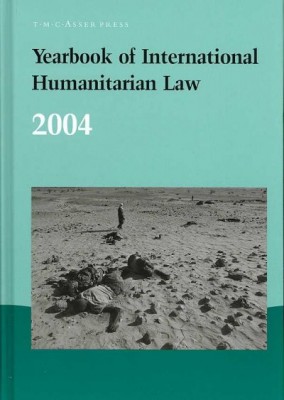| Yearbook of International Humanitarian Law - 2004 Edition. Edition Contributor(s): McCormack, Timothy (Other), McDonald, Avril (Editor) |
|
 |
ISBN: 9067042242 ISBN-13: 9789067042246 Publisher: T.M.C. Asser Press OUR PRICE: $161.49 Product Type: Hardcover - Other Formats Published: December 2007 Annotation: The world's only annual publication devoted to the study of the laws of armed conflict, the Yearbook of International Humanitarian Law provides a truly international forum for high-quality, peer-reviewed academic articles focusing on this highly-topical branch of international law. The Yearbook also includes a selection of documents from the reporting period, many of which are not accessible elsewhere and a comprehensive bibliography of all recent publications in humanitarian law and other relevant fields. Ease of use of the Yearbook is guaranteed by the inclusion of a detailed index. Distinguished by its topicality and contemporary relevance, the Yearbook of International Humanitarian Law bridges the gap between theory and practice and serves as a useful reference tool for scholars, practitioners, military personnel, civil servants, diplomats, human rights workers and students. |
| Additional Information |
| BISAC Categories: - Law | Public - Political Science | Human Rights - Law | Criminal Law - General |
| Dewey: 341.67 |
| Series: Yearbook of International Humanitarian Law |
| Physical Information: 804 pages |
| Descriptions, Reviews, Etc. |
| Publisher Description: After a wave of Palestinian terror attacks directed against Israeli civilians, in which 4 hundreds of them were murdered, Israel launched Operation 'Defensive Shield'. The operation was launched on 29 March 2002 in order to eradicate the Palestinian 5 terrorist infrastructure and prevent further terrorist attacks. In the context of this operation, on 3 April 2002 the Israel Defence Forces (IDF) entered the refugee 6 camp of Jenin, 'the capital of the suicide bombers', from which a terror infrastruc- 7 ture - unprecedented in scope - had perpetrated a large number of terror attacks. It soon became obvious that the Palestinian militants intended to defend the refugee 8 camp using every means they had. These conditions created a real dilemma for the IDF - which approach should be selected to fight the enemy, considering the - quired mission, the safety of the soldiers and the need to minimise injury to inno- 9 cent civilians? The planners of 'Defensive Shield' decided to use infantry forces that would progress through the camp in a gradual and cautious manner on a house-to-house 10 basis. The planners knew that there were other modes of military action that could have accomplished the mission more expediently and with minimal risk for 11 the soldiers' lives - such as the use of aircraft or artillery. However, these alt- natives were rejected because of the desire to minimise collateral damage among 12 the civilian population. |
Contributor Bio(s): McCormack, T.: - University of Melbourne.McDonald, A.: - T.M.C. Asser Institute, The Hague. |